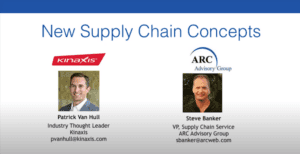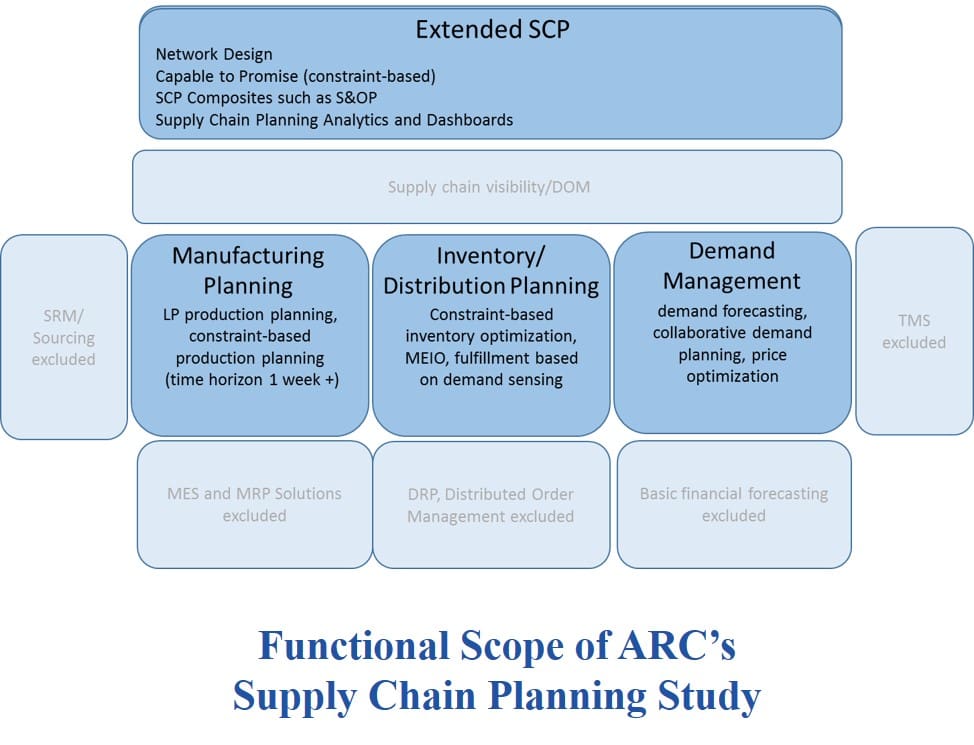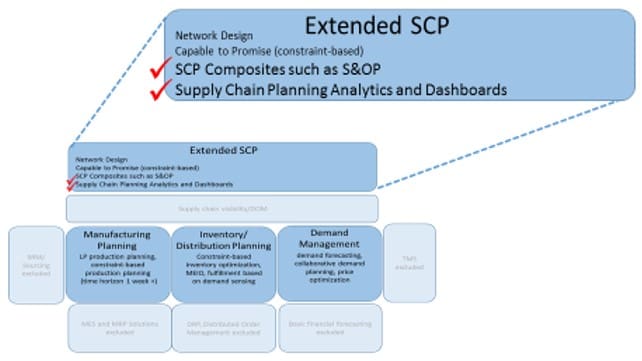 Sales & Operations Planning (S&OP) as a process has been around since the 1980’s. While the terminology evolved, the underlying thesis of S&OP has stayed the same, i.e., bridge the divide between sales forecasts and operational plans while respecting the budget. In general, S&OP consists of a New product review, Demand Review, Supply Review, Management Review and some level of reconciliation between these steps. The process as is implemented in many companies focuses on balancing demand and supply based on preestablished rules and policies that serve as guardrails for the planning process. More recently the technology has evolved to a point where such processes can be conducted at a faster cadence than a typical monthly cadence that was the norm. Rapid scenario planning is increasingly being touted as a way to counter the disruptions that seem to increase in frequency and intensity.
Sales & Operations Planning (S&OP) as a process has been around since the 1980’s. While the terminology evolved, the underlying thesis of S&OP has stayed the same, i.e., bridge the divide between sales forecasts and operational plans while respecting the budget. In general, S&OP consists of a New product review, Demand Review, Supply Review, Management Review and some level of reconciliation between these steps. The process as is implemented in many companies focuses on balancing demand and supply based on preestablished rules and policies that serve as guardrails for the planning process. More recently the technology has evolved to a point where such processes can be conducted at a faster cadence than a typical monthly cadence that was the norm. Rapid scenario planning is increasingly being touted as a way to counter the disruptions that seem to increase in frequency and intensity.
Then the process was put to test in recent times, as increasing demand and supply side shocks caught companies flatfooted. As product flows rapidly shifted and hard baked assumptions about lead times and sourcing locations were put to test, users across many organizations bypassed their planning systems and turned to excel sheets, internal data science teams or non-traditional supply chain vendors who could deliver AI based solutions at a faster turn. In fact, even prior to the pandemic, questions were being raised about the effectiveness of the S&OP process. In the research conducted by Supply Chain Insights, only 35% of the respondents rated their S&OP process as effective or extremely effective in 2019 compared to 65% for the same in 2016. Does this mean at some point in time we move on from S&OP? While it is good to entertain such provocative points of view, let us acknowledge that S&OP when done correctly is very cross-functional and provides the platform for enhanced collaboration and communication. Hence, it serves us well to focus on making the S&OP process more resilient in addressing disruptions. Supply Chain Design wherein nodes, modes, flows, and policies driving a supply chain are reviewed and realigned to business objectives is emerging as a discipline to build resilience into S&OP. Here are some recommendations based on our experience in engaging with companies that are leading the way:
- Match the Supply Chain Design frequency and cadence to that of S&OP: Traditional view of Supply Chain Design was to conduct this as an episodic exercise wherein an internal expert(s) or an external consultant approaches design as a special project. One off recommendations are made about facility locations (i.e., nodes), flows of the products between origin-destination pairs, and policies (inventory, replenishment, asset utilization etc) with no clear accountability on how the recommendations make their way into planning and execution. This can result in a messy supply chain network and flows that adversely impact cost-to-serve as can be seen in figure 1 in case of a distribution intense company we worked with. As shown in the map, the company has 4 distribution centers wherein each location is shipping to several places across the US (for the sake of simplicity we are not showing the manufacturing and sourcing locations here). This network evolved over a period of time as the company went through significant shifts such as acquisitions and launching of several new products. However, given the intense focus on demand-supply balancing in S&OP, the company never questioned the design showing in figure 1. The planning processes assumed the origin-destination pairs as implied in this figure.

Upon reviewing their network, a recommendation was made to realign the network as shown in figure 2, which resulted in significant savings in cost-to-serve. However, making this recommendation alone did not suffice. The company chose to incorporate reviews of its flows as a part of its ongoing reviews supported by a Center of Excellence (CoE). With over 30% of its revenues coming from new product launches, such dynamic reviews of the network and flows is becoming increasingly a necessity for the company.

- Turn the planning processes outside in: The S&OP processes in most companies consider an inside out view relying on internal data. For example, forecasts are generated using the past three years of history, implicitly assuming history repeats. However, this fundamental assumption was proven wrong in recent times. From a demand perspective, considering external causal factors such as weather, consumer spending, employment levels, construction starts, or consumer price indices in our experience have delivered double digit percentage improvements in forecast accuracy. From a supply perspective with the severely constrained transportation networks, port congestions, and stretched lead times, one needs to factor these into dynamically adjusting the supply assumptions. AI can be of significant help here in mining through the transactional and operational data and help correct these assumptions.
- Make Business Continuity Planning a part of the scenario playbook: While scenario planning is increasingly a part of the S&OP process, oftentimes scenarios tend to be too simplistic, such as what if the demand is up or down by 10%. Instead using the discipline of the flow modeling as mentioned in #1 above, S&OP should incorporate:
- Identification and testing of specific points of failure, quantified impacts on the supply chain from these failures, and mitigation of the same
- Strategic placement of inventory buffers to ensure sufficient ability to absorb shocks. Traditional inventory optimization implementations often assume fixed network and flows. However, reviewing the inventory target setting in tandem with Supply Chain Design where the flows are becoming increasingly dynamic will be a necessity
- Key capacity constraints will need to be effectively and optimally managed before pursuing expansion opportunities. Rules based approaches that are inherent to constrained capacity planning as part of S&OP will not uncover the best opportunities to defer capital expansion projects. Optimization based technologies can maximize the leverage from existing assets before considering expansion.
- Engage sourcing team to ensure supply continuity: Supplier mix for many organizations we work with is becoming increasingly dynamic. Several factors contribute to this such as ESG (Environmental, Social, and Governance) initiatives by companies opting to conduct business with suppliers with more sustainable practices, or push by the governments for domestication or near shoring of supply chains. Ensuring Sourcing and Supply Chain are tightly integrated ensures avoidance of any surprises that adversely affect customer service and fill rates, by being proactive about launching sourcing events.Beyond addressing these sourcing needs, Procurement needs to have a seat at the table. A close alignment between Procurement and Supply Chain can also yield several very interesting use cases that will help turbocharge your business. The time-phased visibility afforded by S&OP processes will be very beneficial to the Chief Procurement Officer’s organization in better leveraging this visibility to win-win engagements with the supply base. CSCO and CPO, both can benefit from a closer collaboration. S&OP can serve as a vehicle towards that.
- Include and report on Sustainability metrics as part of the S&OP cadence: Given the investor pressures and evolving consumer choices, sustainability is a rising priority with many companies pledging to be Carbon neutral within the next decade. Rapidly changing regulatory environment provides the impetus to accelerate sustainability initiatives. Given that the bulk of the carbon footprint for companies results from supply chain, the CSCO has a huge interest in supply chain sustainability. However, that interest doesn’t necessarily translate into lower levels in the organization. Given that supply chain teams can significantly impact sustainability, whether through reducing the number of miles traveled, or through consolidating shipment loads or through reducing the inventory levels without impacting services levels, at the least, the teams should be measuring and reporting on sustainability metrics as part of the management review. Given the cross functional nature of both supply chain and sustainability functions, S&OP can be an effective platform for monitoring sustainability impact KPIs along with Operations and Financial KPIs.
By implementing the aforementioned recommendations, organizations can not only ensure a more reliable and efficient demand supply balancing, but also ensure the S&OP continues to stay relevant in a world where resilience and sustainability are gaining prominence. If not, S&OP can risk becoming increasingly irrelevant!
Dr. Madhav Durbha is the Vice President of Supply Chain Strategy Coupa Software, where his team helps customers and prospects solve various supply chain challenges. Prior to Coupa, Dr. Durbha held positions at LLamasoft, Kinaxis, JDA Software and i2 Technologies, Inc. With more than 20 years in the supply chain industry, Dr. Durbha has broad experience in strategy & process consulting, supply chain software, program management, software application development & deployment, machine learning and data science. He received his Ph.D. in chemical engineering from the University of Florida and his bachelor’s degree in chemical engineering from the Indian Institute of Technology at Madras.

















 The Executive Interviews conducted at the virtual
The Executive Interviews conducted at the virtual 




